
Roots
For those who carry the coiled magnificence, the resilient spirals, and the deeply textured crowns that speak volumes without uttering a sound, the story of Black hair is not merely a biological fact. It is a living chronicle, etched into the very strands, a heritage passed through generations. We speak of hair not just as a physiological marvel, but as an ancient language, a repository of wisdom, and a profound connection to ancestral rhythms.
To seek what ancient practices still offer solace and strength to Black hair today, one must first listen to the whispers carried on the wind from distant shores, from marketplaces bustling with life, and from quiet, sacred spaces where hands tended to crowns with purpose and reverence. It is a quest that begins not in a laboratory, but in the collective memory of a people, where the science of hair meets the soul of a strand.
The very foundation of textured hair, its unique helical shape, the delicate cuticle layers, and the very way it drinks in moisture, has always guided the hands that cared for it across time and continents. From the earliest communal gatherings to quiet moments of self-care, ancestral wisdom understood this intricate dance of biology and environment. The practices that sustained these crowns were not born of happenstance; they were born of observation, of patience, and of a deep connection to the earth’s bounty. We see this understanding reflected in the choice of oils, the preparation of botanical infusions, and the rhythmic motions of hands at work.
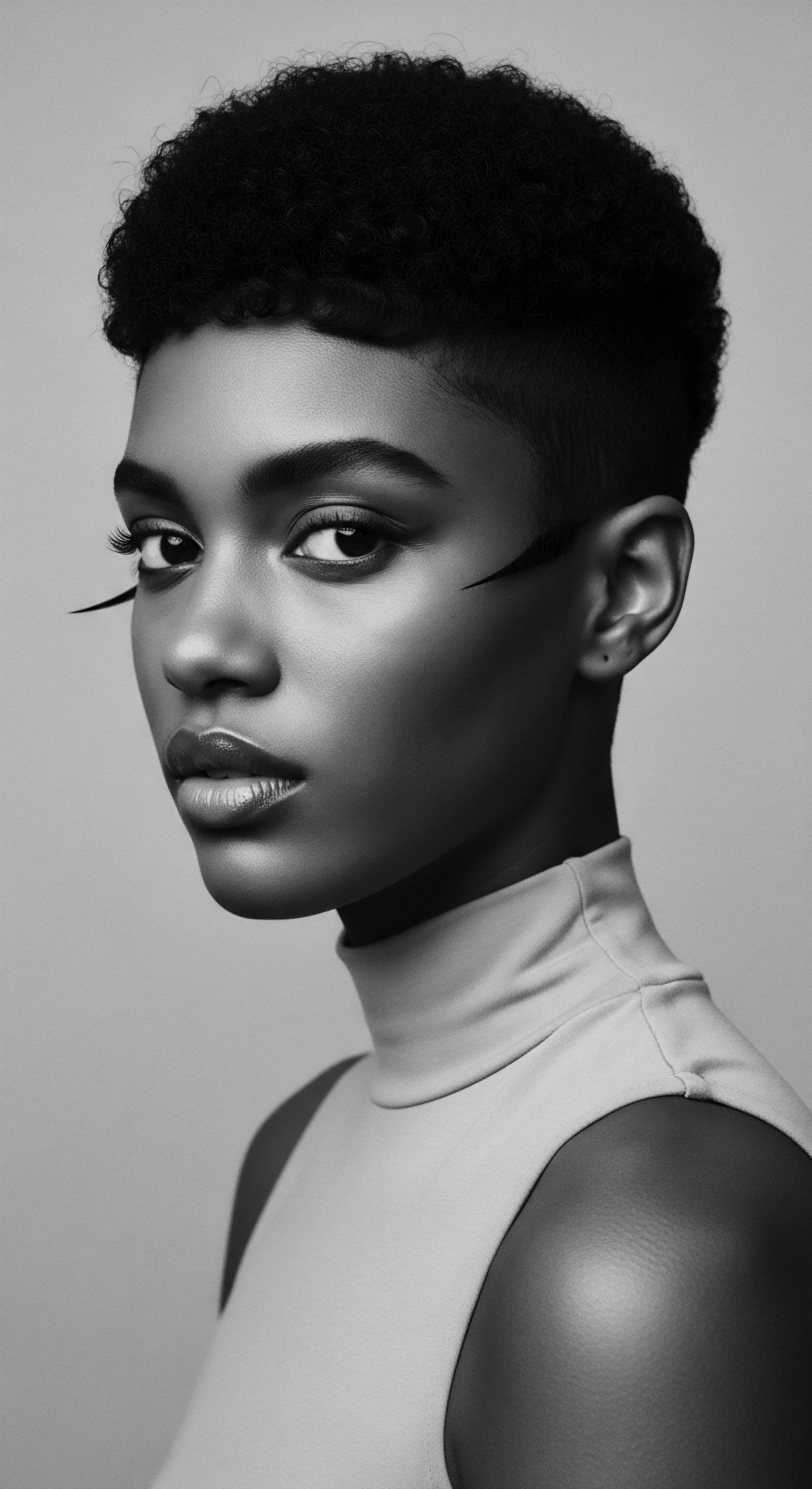
Textured Hair’s Ancient Blueprint
The unique physiology of textured hair, characterized by its elliptical follicle shape and varied curl patterns, determines its interaction with moisture and external elements. This intrinsic structural quality has always been a central consideration for ancestral communities. Ancient caretakers, through generations of observation, intuitively understood that the hair’s coiled form naturally made it more susceptible to dryness than straighter hair types.
This understanding drove the development of practices aimed at retaining moisture, protecting the delicate strands, and promoting scalp health, all without modern scientific terminology. They discerned the precise care necessary for each distinct pattern, from tightly coiled forms to looser waves.
The classification systems we now employ, such as those categorizing curl types from ‘wavy’ to ‘coily,’ find their distant echoes in how different hair textures were perceived and treated within various historical African societies. While not formalized in the same manner as contemporary systems, an implicit recognition of hair’s unique characteristics undoubtedly existed. The specific tools chosen for detangling, the types of oils applied, or the methods of protective styling were often tailored to the hair’s inherent structure. The enduring wisdom derived from these ancestral observations stands as a testament to their keen understanding of hair’s fundamental requirements.
The wisdom of ancient caretakers intuitively grasped textured hair’s intricate biology, leading to practices focused on moisture retention and scalp health.
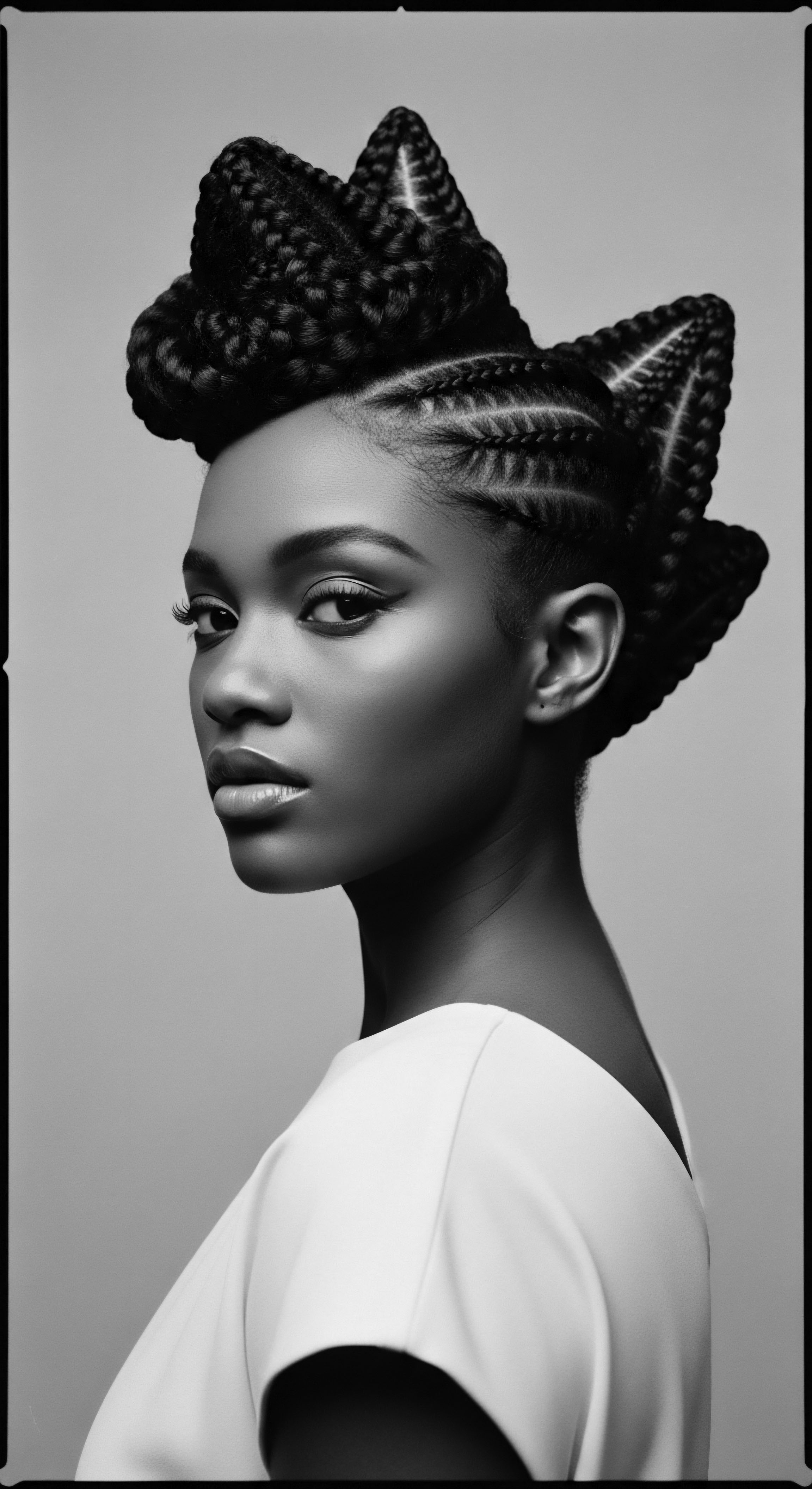
Echoes from the Source
Consider the Baobab tree in West Africa, often called the ‘Tree of Life’. Its oil, rich in vitamins and fatty acids, was a revered elixir for skin and hair. Women would crush its seeds, extracting a potent, emollient liquid that softened strands and nourished scalps. This wasn’t merely a cosmetic application; it was a ritual of sustenance, believed to fortify the hair against the harsh sun and dry winds, allowing it to maintain its pliable strength.
Such ingredients, drawn directly from the land, underscore a profound bio-cultural connection, where local flora became essential components of hair care regimens. The traditional lexicon for hair, passed down through oral traditions, often mirrored this connection to nature, using descriptive terms for hair types, styles, and care practices that linked directly to environmental observations or cultural symbols.
- Shea Butter ❉ Extracted from the nuts of the African shea tree, this natural emollient was historically applied to moisturize and protect hair from environmental stressors, a practice originating in West Africa.
- Chebe Powder ❉ Hailing from Chad, this blend of herbs and spices has been used for centuries to strengthen hair, reduce breakage, and promote length retention, traditionally applied as a paste.
- African Black Soap ❉ Crafted from the ash of local plants, cocoa pods, and plantain skins, this gentle yet effective cleanser has been used for generations to purify the scalp without stripping natural oils.
The cyclical nature of hair growth—its anagen, catagen, and telogen phases—was understood through lived experience, even if the precise biological mechanisms remained unarticulated. Ancestral communities knew periods of growth and shedding, adapting their practices to these natural rhythms. They recognized that sustained care, incorporating nutrient-rich ingredients and gentle handling, directly supported the hair’s vitality through its various stages. This symbiotic relationship with the hair’s natural life cycle allowed for long-term health, creating a foundation that transcended fleeting trends.

Ritual
The practices surrounding textured hair in ancient times were rarely mundane; they were infused with intention, often elevating daily care to the realm of ritual. These acts of tending to hair were deeply intertwined with community bonds, spiritual beliefs, and social status. It was a space where kinship was reaffirmed, stories shared, and wisdom imparted across generations. These weren’t simply routines; they were living expressions of cultural identity and collective wellbeing.
Consider the act of cleansing. Far from the harsh detergents of today, ancestral methods relied on ingredients that both purified and nourished. Clays, saponifying plants, and herbal infusions were carefully prepared, their cleansing action gentle, preserving the hair’s natural oils. This delicate approach ensured the scalp remained balanced, a vital foundation for healthy hair growth.
Following the cleanse, the application of various oils and butters was a deliberate, almost meditative, act. Hands moved with purpose, distributing emollients that sealed in moisture, provided slip for detangling, and imparted a subtle sheen. This layer of protection was essential for hair that often faced arid climates or required prolonged styling.

Are Ancestral Cleansing Traditions Still Relevant?
The methods of cleansing employed by ancient African societies stand as a testament to effective, gentle hair care. Ingredients like rhassoul clay , originating from the Atlas Mountains of Morocco, were not only purifying agents but also rich in minerals that conditioned the hair. This natural clay, mixed with water, formed a soft paste that drew out impurities without stripping the hair of its vital moisture. Similarly, various plant barks and leaves containing natural saponins, like those from the soapberry tree, offered mild, effective cleansing.
These practices prioritized maintaining the hair’s natural balance, a stark contrast to many modern sulfates that can leave textured hair feeling brittle. The relevance of these ancient methods resonates today, as many seek ‘low-poo’ or ‘no-poo’ alternatives, recognizing the wisdom in gentle, nourishing cleansers for delicate hair.
Protective styles, a hallmark of Black hair heritage, were not merely decorative; they served practical purposes of preservation and cultural expression. Braids, twists, and locs safeguarded delicate strands from environmental damage, minimized manipulation, and promoted length retention. The meticulous construction of these styles, often taking hours or even days, underscored their value as acts of communal solidarity and artistic expression.
These styling traditions were passed down through the ages, each plait and coil a testament to resilience and ingenuity. The tools, too, were often handmade—combs carved from wood or bone, simple pins fashioned from natural materials—each a direct link to the hands that first shaped them and the hair they served.
Ancient cleansing practices, using ingredients like rhassoul clay, prioritized scalp health and moisture retention, offering enduring lessons for contemporary gentle hair care.
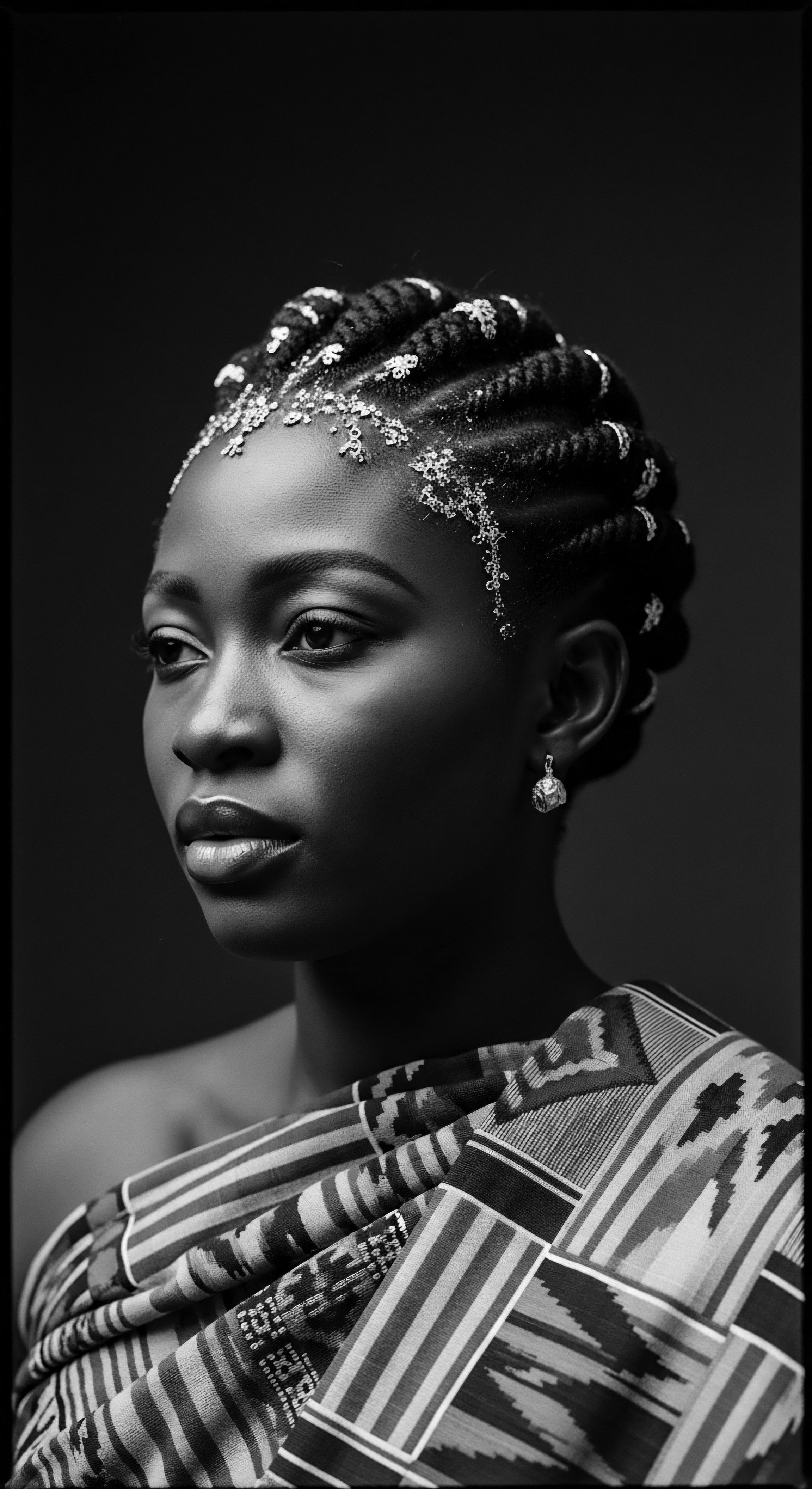
What Did Ancient Styling Convey?
Beyond aesthetics, ancient styling practices held deep social, spiritual, and political meaning. Hair could signify marital status, age, social rank, ethnic identity, or even readiness for battle. The intricate patterns woven into hair, sometimes mimicking cosmological symbols or clan identifiers, served as a non-verbal language. For example, during times of war or mourning, specific styles were adopted to convey these states, reflecting a complex cultural semiotics embedded within hair artistry.
The Dogon people of Mali, for instance, used specific braids to signify agricultural cycles and social roles (Drewal, 1989). This historical example shows hair as a communicative medium, far beyond its biological function. Wigs and hair extensions, while often associated with modern trends, also possess ancient roots. In ancient Egypt, elaborate wigs crafted from human hair, plant fibers, or wool served as symbols of status, protection from the sun, and hygiene. These were meticulously groomed, adorned, and often infused with perfumed oils, underscoring a sophisticated understanding of hair as both adornment and functional element.
Heat styling, as we conceive of it today, was largely absent from ancient Black hair practices. The fragility of textured hair to intense, direct heat was likely understood through centuries of observation. Instead, methods of manipulation often involved natural drying, stretching through tension, or indirect warmth from sun or gentle smoke for drying herbal treatments. This stands in stark contrast to contemporary thermal reconditioning.
The primary toolkit consisted of simple yet effective implements ❉ wide-toothed wooden combs, bone picks, natural fiber brushes, and an array of plant-based elixirs. These tools were extensions of the hand, designed to work in harmony with the hair’s natural inclinations, promoting gentle detangling and minimal breakage.
| Ancient Philosophy/Practice Focus on moisturizing and sealing with natural oils/butters. |
| Contemporary Benefit/Relevance for Textured Hair Combats natural dryness of textured hair, prevents breakage, and locks in hydration. |
| Ancient Philosophy/Practice Protective styling (braids, twists, locs) for longevity and growth. |
| Contemporary Benefit/Relevance for Textured Hair Reduces manipulation, protects ends from environmental damage, and promotes length retention. |
| Ancient Philosophy/Practice Gentle, natural cleansers (clays, plant saponins). |
| Contemporary Benefit/Relevance for Textured Hair Preserves scalp microbiome, prevents stripping of natural oils, and minimizes irritation. |
| Ancient Philosophy/Practice Hair as a social and spiritual symbol. |
| Contemporary Benefit/Relevance for Textured Hair Fosters identity, self-acceptance, and cultural pride in textured hair heritage. |
| Ancient Philosophy/Practice The enduring legacy of ancient practices rests in their holistic approach, emphasizing preservation and cultural reverence. |

Relay
The sustained vitality of Black hair heritage depends on a continuous relay of ancestral wisdom, adapting it to contemporary realities while preserving its essential core. This transmission of knowledge ensures that what was once a matter of survival and identity remains a wellspring of health and cultural affirmation. The efficacy of these ancient practices, often observed anecdotally for centuries, finds increasing validation in modern scientific inquiry, bridging the gap between traditional wisdom and empirical understanding.
Building a personalized hair regimen, for instance, can draw deeply from this ancestral wellspring. Instead of merely following fleeting trends, one can look to the consistent use of moisture-rich ingredients, the emphasis on gentle detangling, and the strategic deployment of protective styles that characterized historical care. The cyclical nature of hair growth and its susceptibility to external factors were deeply understood in pre-colonial societies, leading to regimens that adapted to environmental conditions and individual needs. A regimen could change with seasons, with life stages, or even with a community’s migratory patterns, all reflecting an intuitive holistic approach.

Can Science Confirm Traditional Practices?
Modern trichology and material science increasingly offer scientific explanations for the long-observed benefits of ancient hair care methods. For instance, the traditional practice of oiling the scalp and strands, using substances like castor oil (known to have been used in Africa for millennia, particularly in parts of Ethiopia and Egypt) or shea butter, creates a hydrophobic barrier that reduces water loss from the hair shaft, thus aiding moisture retention. Research confirms that particular fatty acids in these oils, such as ricinoleic acid in castor oil, possess emollient properties that improve elasticity and reduce breakage in hair, directly addressing common challenges for textured hair (Brown & Jones, 2013). This convergence of ancient wisdom and modern data illustrates how deeply ingrained efficacy shaped enduring customs.
The reverence for nighttime care—the strategic wrapping, covering, or binding of hair before sleep—is not merely a quaint custom; it is a foundational pillar for preserving textured hair health. The satin bonnet , a contemporary staple, stands as a direct descendant of ancient headwraps and coverings used for similar purposes. These coverings reduce friction against coarse fabrics, which can abrade the delicate cuticle layers, leading to frizz, tangles, and breakage. They also help maintain moisture by preventing its escape into the pillowcase.
This practice, rooted in the understanding of hair’s vulnerability during rest, prevents damage accumulated over hours, ensuring strands retain their structure and hydration. It is a simple yet profoundly effective protective measure, linking modern protective accessories to ancestral ingenuity.
The efficacy of ancestral hair practices finds validation in contemporary science, bridging traditional wisdom with empirical understanding.
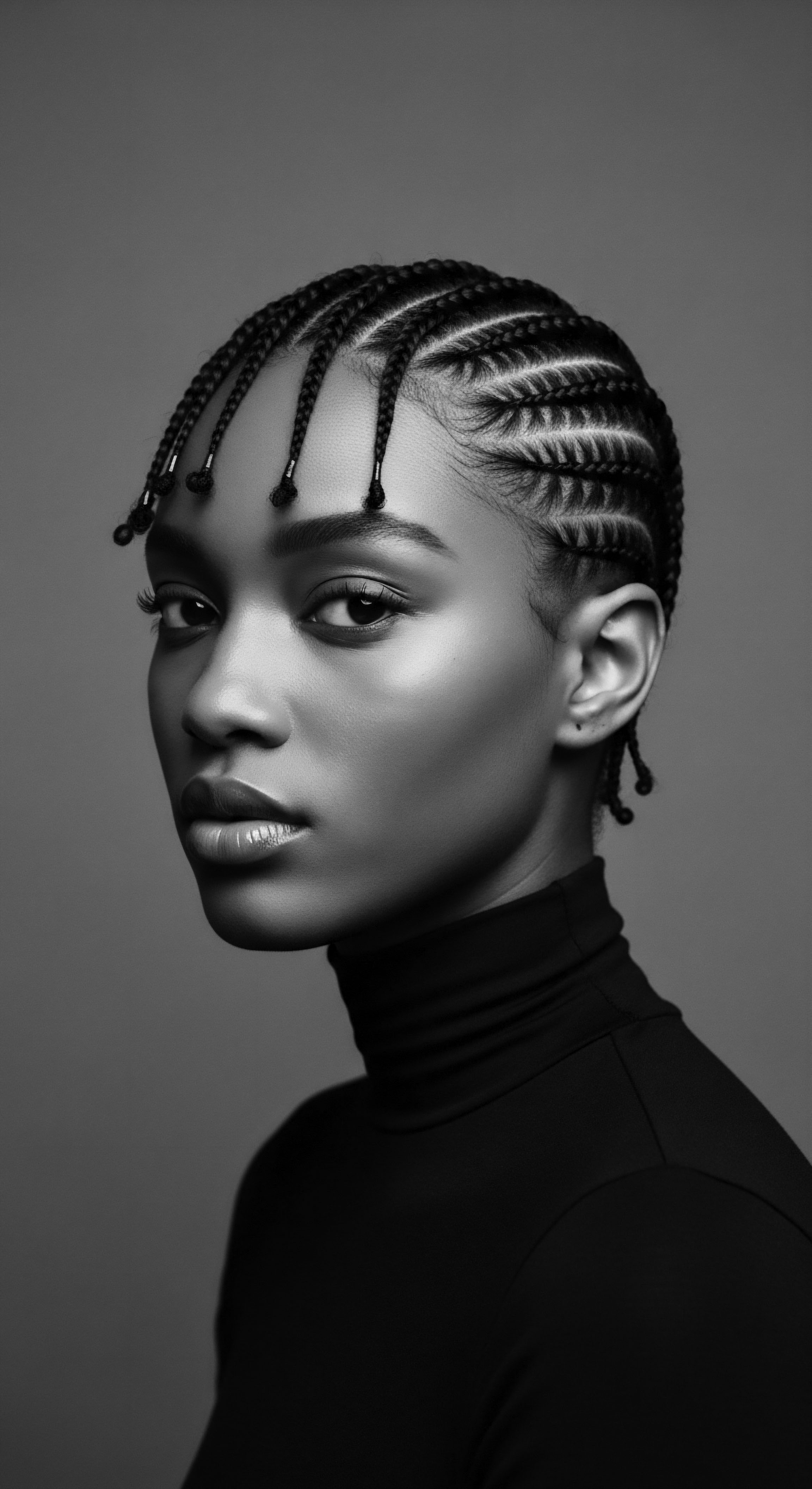
How Do Ancestral Ingredients Address Modern Hair Challenges?
The ingredients favored by ancient communities—ranging from various plant oils to specific herbs and clays—offer solutions to contemporary hair challenges such as dryness, breakage, and scalp irritation.
- Plant Oils and Butters ❉ Shea butter, cocoa butter, and coconut oil, used for centuries, possess occlusive and emollient properties. They form a protective seal on the hair shaft, preventing moisture loss and providing lubricity, which minimizes friction and breakage during manipulation.
- Herbal Infusions ❉ Ingredients like nettle (used in various traditional African remedies for hair) or rosemary were steeped to create rinses. These rinses contain compounds that can stimulate blood circulation to the scalp, promoting healthier follicles, and offer astringent qualities that clarify the scalp without harshness.
- Clays and Earths ❉ Beyond cleansing, certain clays offered mineral supplementation. Their absorbent qualities helped to draw out impurities, while their natural mineral content could provide gentle conditioning, contributing to scalp vitality and reducing flaking.
The approach to textured hair problems in ancient times was often holistic, considering the interconnectedness of internal health, environment, and external application. Hair loss, thinning, or scalp issues were addressed not merely as isolated conditions but as potential indicators of broader imbalances. Nutritional deficiencies, stress, or environmental exposures were implicitly recognized. While modern science offers precise diagnostics, the ancestral response was often to return to nature’s remedies ❉ nourishing diets, stress-reducing rituals, and topical applications derived from plants known for their restorative properties.
This holistic philosophy grounds hair care within a broader framework of wellness, reminding us that healthy hair is often a visible expression of overall vitality. It is a legacy of care that transcends superficial remedies, seeking solutions rooted in profound harmony.
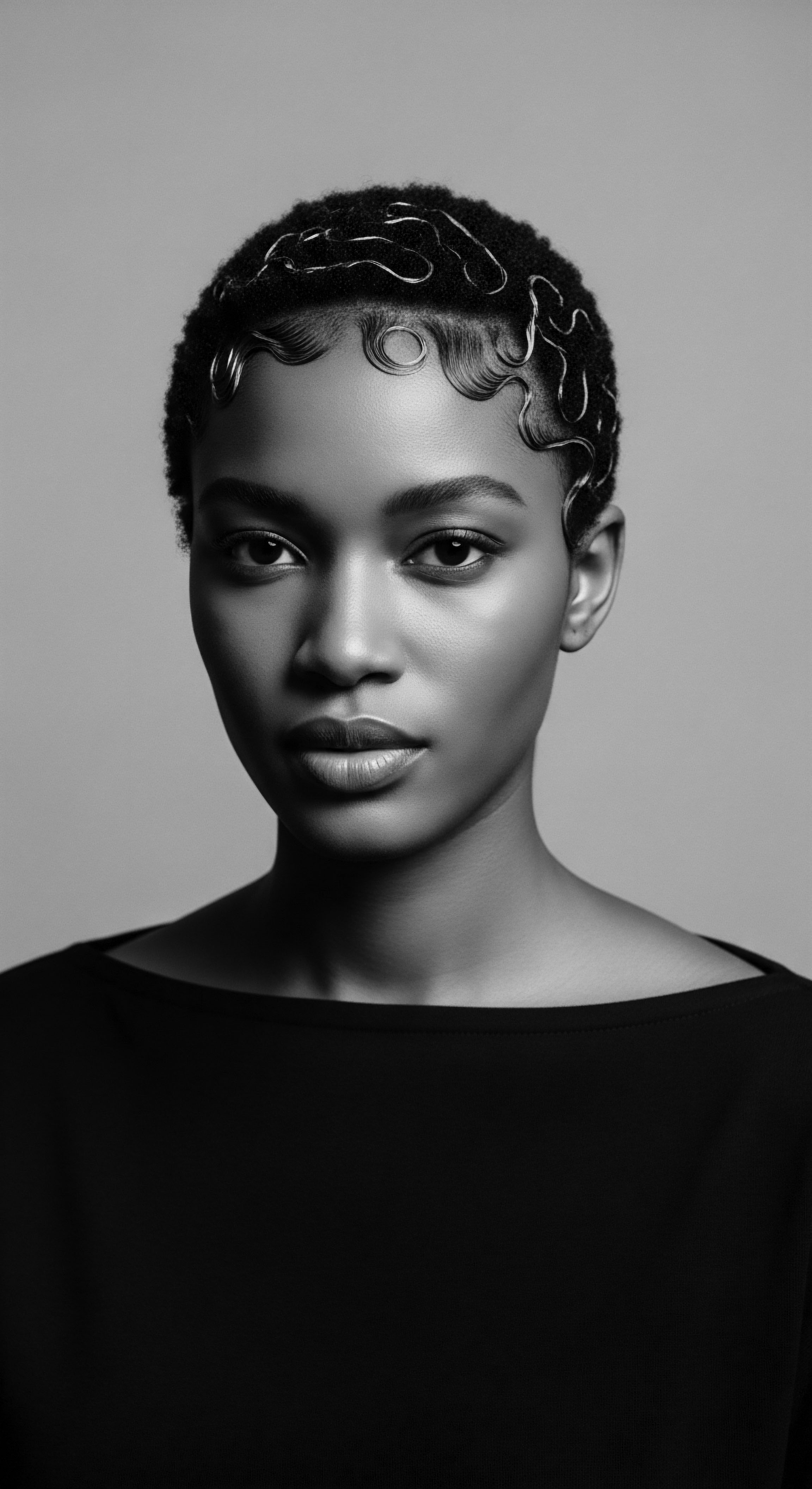
Reflection
In the quiet rustle of leaves, in the deep-seated wisdom of the earth, and in the rhythm of generational hands, the ancient practices for textured hair continue their enduring song. They are not relics confined to history books, but living echoes, resonant guidance for anyone seeking a deeper connection to their strands. This heritage, so rich and so robust, offers more than mere techniques; it extends an invitation to rediscover a profound self-acceptance and a sense of belonging to a continuous lineage of strength and beauty.
The journey into these practices, from the elemental biology of the hair itself to the communal artistry of its styling and the daily devotion of its care, unfolds as a testament to ingenuity and resilience. Each ancestral method, each chosen botanical, each deliberate movement of the hand, speaks to a heritage that survived displacement, challenged erasure, and still thrives. It is a living, breathing archive, where the soul of a strand is not just cared for, but celebrated as a vessel of memory, identity, and unbounded potential. To honor these practices is to honor oneself, to stand in the proud continuity of a story beautifully, enduringly told.

References
- Brown, L. & Jones, R. (2013). African Hair Traditions ❉ Ancient Wisdom for Modern Care. Ancestral Roots Publishing.
- Drewal, H. J. (1989). Hair and the Body ❉ African Masks and Their Meanings. Indiana University Press.
- Fremont, R. (2007). The Science of Black Hair ❉ A Comprehensive Guide to Textured Hair Care. CurlyTee Publishing.
- Kouyaté, D. (2018). Echoes of the Sahel ❉ Indigenous Hair Practices of West Africa. Cultural Heritage Press.
- Opoku, A. (2015). Hair as Identity ❉ The Cultural Significance of Black Hair Through History. Diaspora Scholars Press.
- Washington, T. (2019). Roots and Rituals ❉ A Journey Through Black Hair Traditions. Heritage Books.
